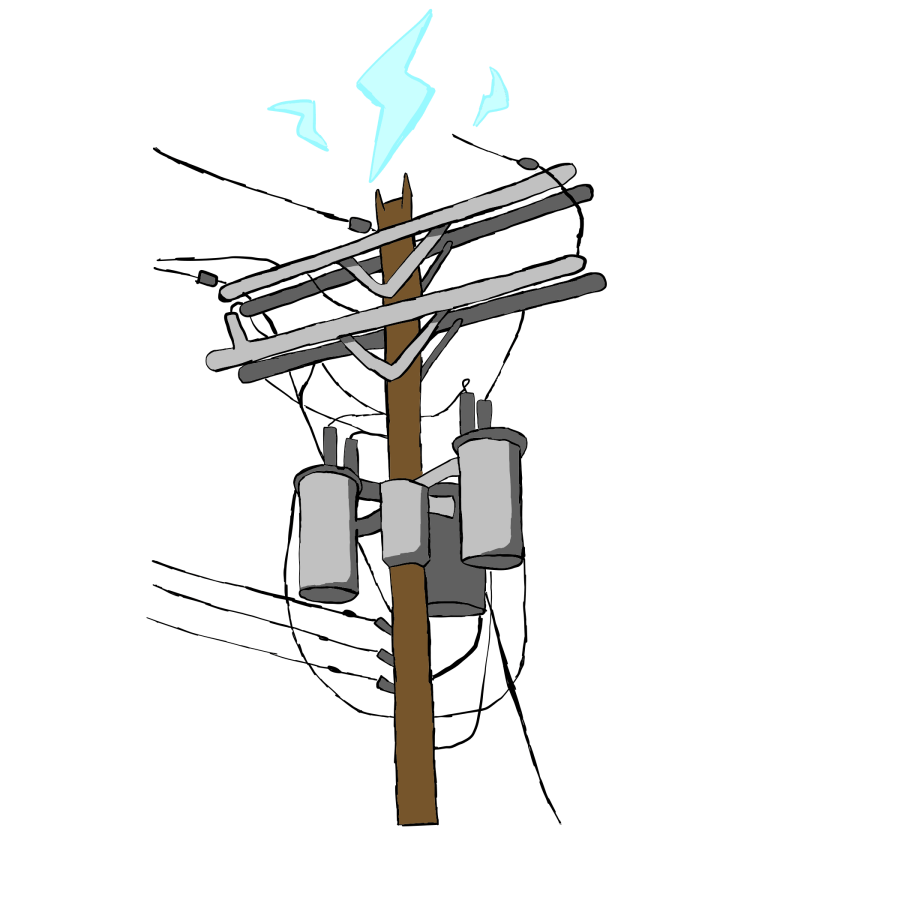Facing limited grid capacity and aging infrastructure, Palo Alto’s Utility Advisory Commission is pushing to modernize the city’s electric grid to meet the city’s electrification and emission reduction goals.
Much of Palo Alto’s electric distribution system was built nearly 80 years ago and is not compatible with modern electricity consumption, Palo Alto’s assistant director of Utility Resource Management Jonathan Abendschein said.
“The system that was built back then is built for homes with relatively light electric needs,” Abendschein said. “So not much air conditioning and with the expectation that you’re using natural gas for heating, water, heating and cooking.”
Additionally, City Council member Greg Tanaka said the above-ground transmission lines and numerous trees around the city can cause power outages, which adds maintenance costs to the city’s budget.
“A lot of trees grow into power lines, and we spend an order of money actually fixing or trimming trees,” Tanaka said. “It’s a bit of a challenge. We actually have a plan where we’re supposed to underground all of our electric poles, but it’s not there yet.”
Tanaka also said the city’s electric lines are often unable to transmit enough electric power to residents during peak demand hours in the evening.
“While we may purchase (our power) from different places, it still comes over the same line,” Tanaka said. “When it’s too hot, our suppliers are worried about overload. When the power lines get too hot, they start to sag, so (the suppliers) have to stop. You have to throttle the power, otherwise you can get forest fires.”
At its March 7 meeting the Palo Alto City Council agreed to prioritize grid upgrades over the next few years. Although no specific plans have been made, the Palo Alto Utility Advisory Commission has begun studies to determine the best way to implement these upgrades, Abendschein said.
“We’re just starting off, and it will definitely require some engineering analysis and some consultant studies, but we’re trying to consider as many innovative ideas as we can,” Abendschein said. “We’re looking at things like Right-Sizing panels, solar and batteries and smart electric panels to see how they can contribute.”
Mayor Pat Burt said one of the city’s major goals is replacing all aging transformers with new models capable of delivering higher voltage to homes to encourage electrification.
“When a home wants to electrify right now, the city has to first replace that (neighborhood’s) transformer, which is often an old transformer nearing the end of its life anyway, with a larger transformer to be able to handle that home’s electric needs,” Burt said. “Right now we’re doing that piecemeal. What we’re looking at now is how we can allow a lot of homes to be electrified while we’re upgrading the whole system over the next decade.”
Tanaka said while the city council has electrification goals, other priorities take more of the city’s budget, leaving little money for infrastructure upgrades.
“What happens is a lot of our city budgets is consumed by small stuff,” Tanaka said. “For instance, we’re building a new public safety building. We have power outages, so we could have used the money that we spent on the police building to underground our power lines. I voted against spending money on the police building just because I felt like we could use the money on more critical infrastructure like our power lines.”
Replacing transformers and upgrading the entire grid could also cost the city as much as $150 million, Burt said. Despite the potential large costs in the city budget, sophomore Spencer Wu said he supports spending on grid electrification.
“It’s going to definitely be a necessary expenditure eventually,” Wu said. “Wiring from the 1950s is not going to hold up forever, and I feel like changing it now, instead of later, when something really bad happens, is better.”
Despite Tanaka’s concerns, Abendschein said electrification would be a major step to combat climate change.
“We really need to tackle our transportation and building emissions, and that means electrification,” Abendschein said. “It means electrifying appliances. It means helping people make the switch to electric vehicles, and that’s what we’re going to need to do to be able to achieve those really ambitious goals that we need to achieve to control worldwide climate change.”

